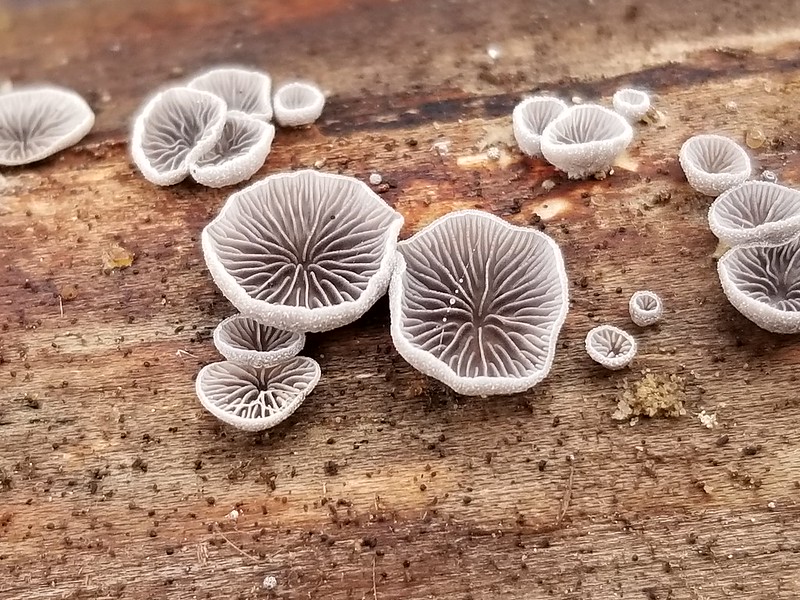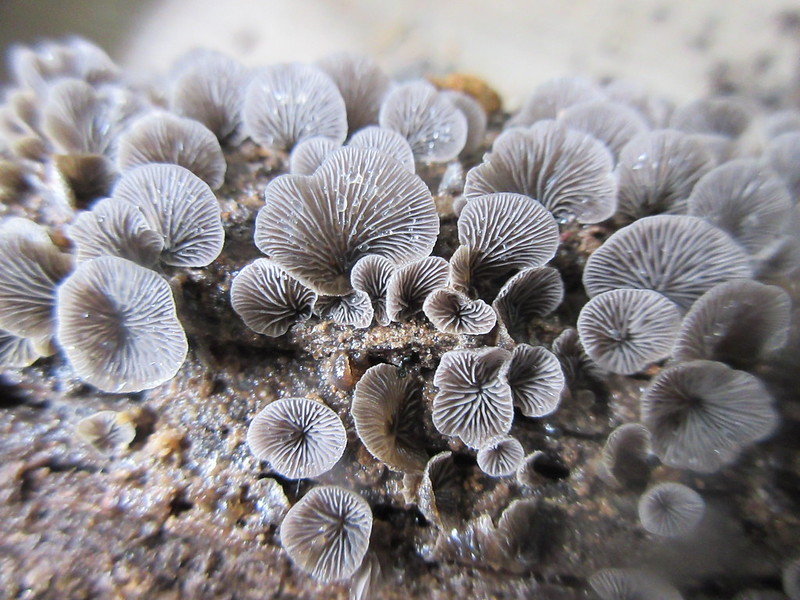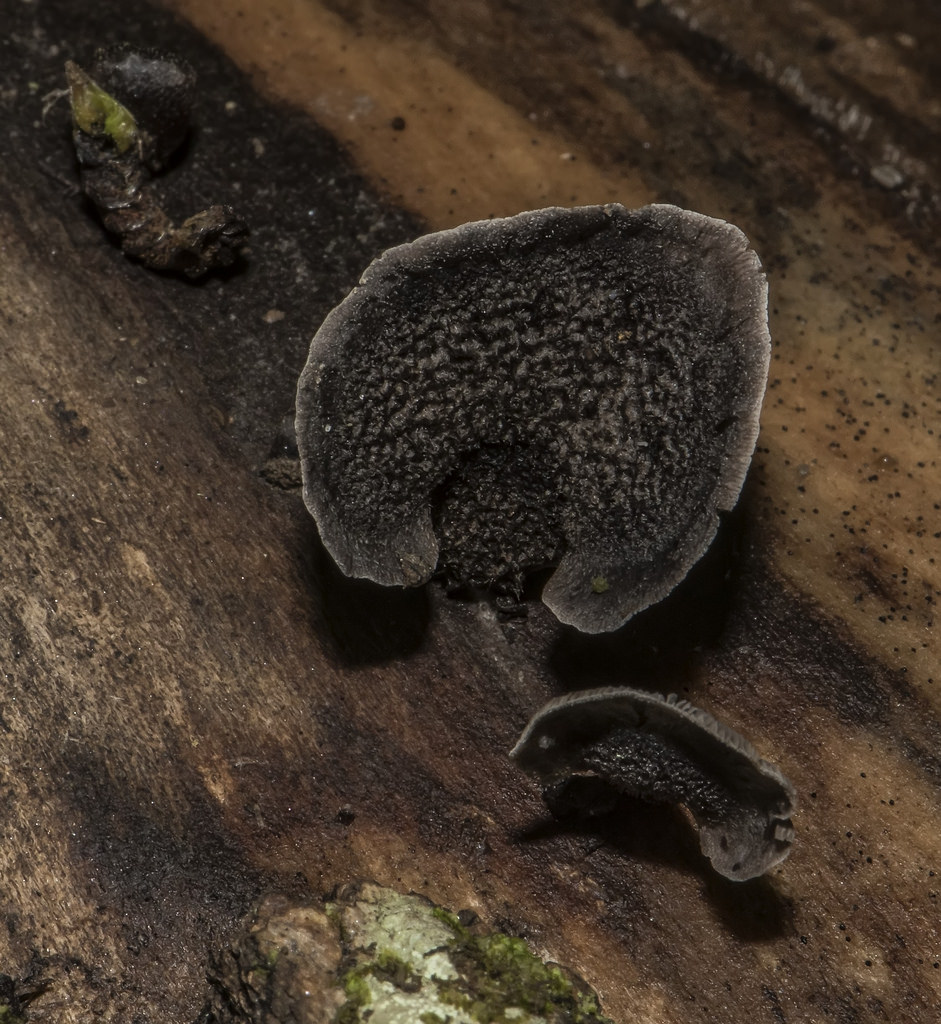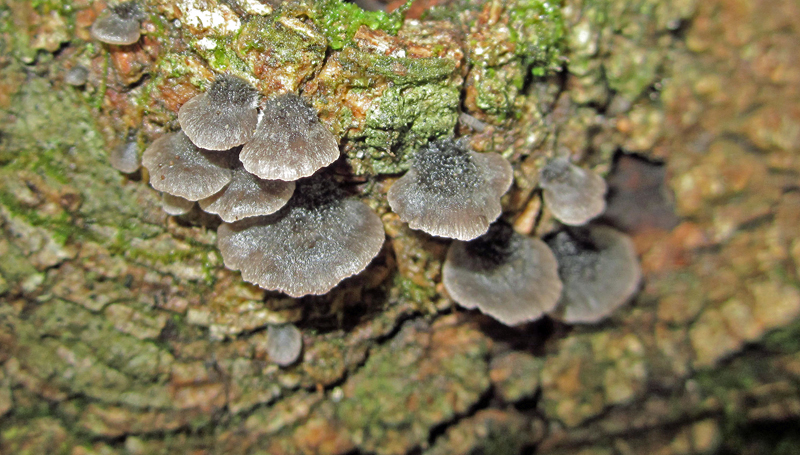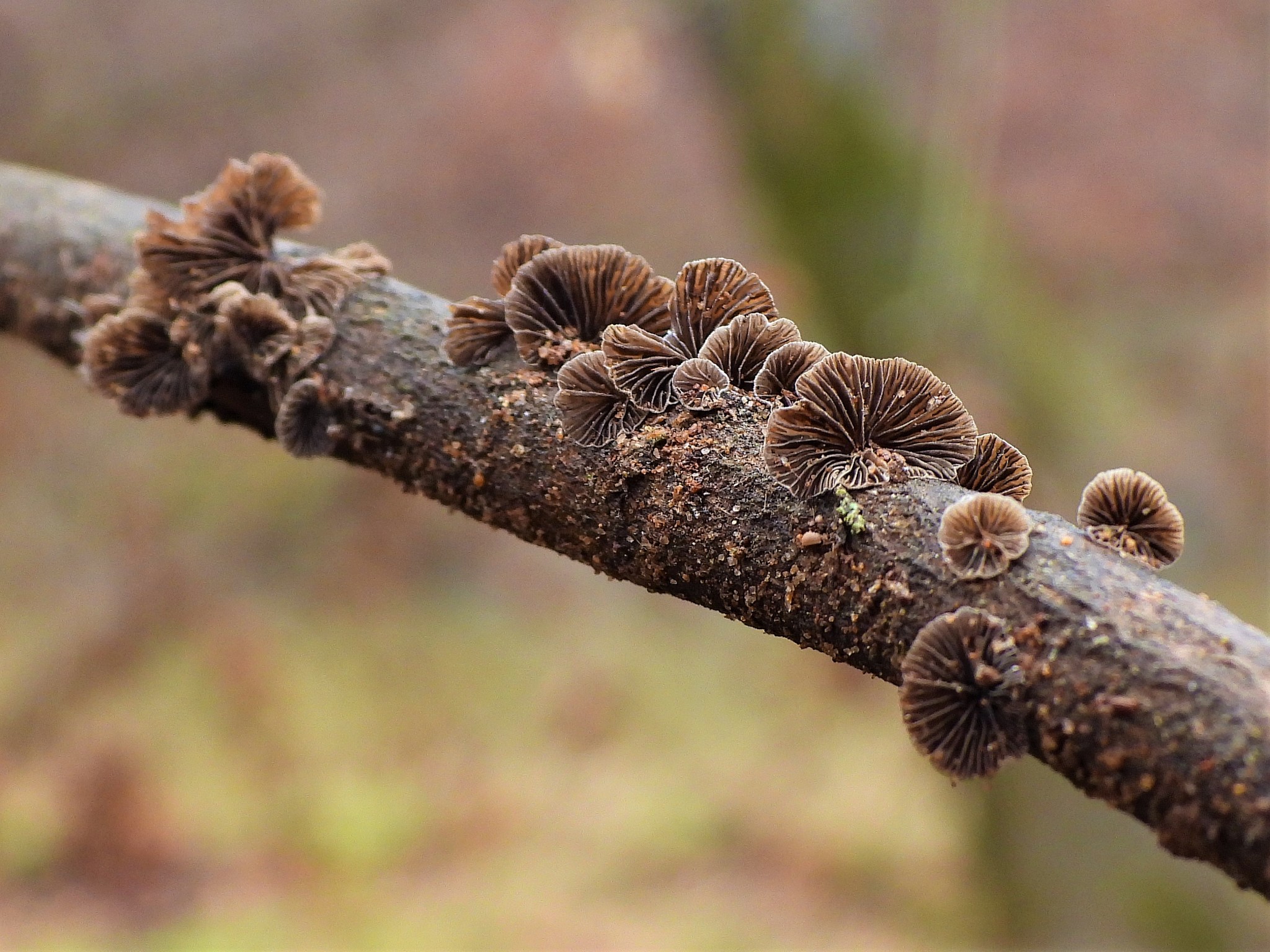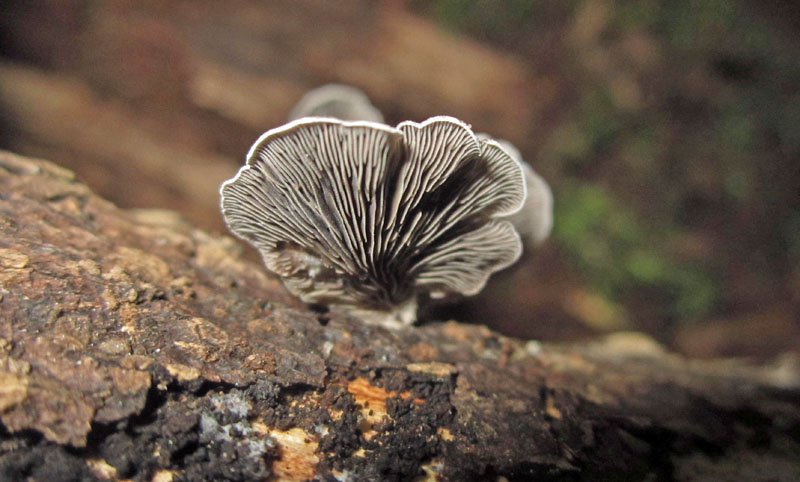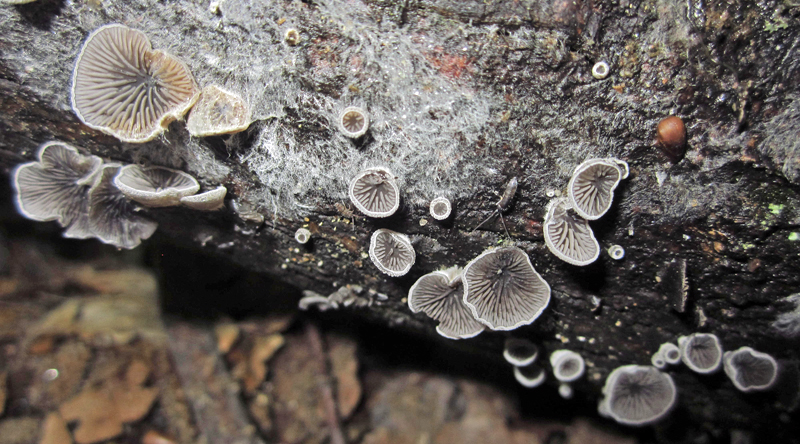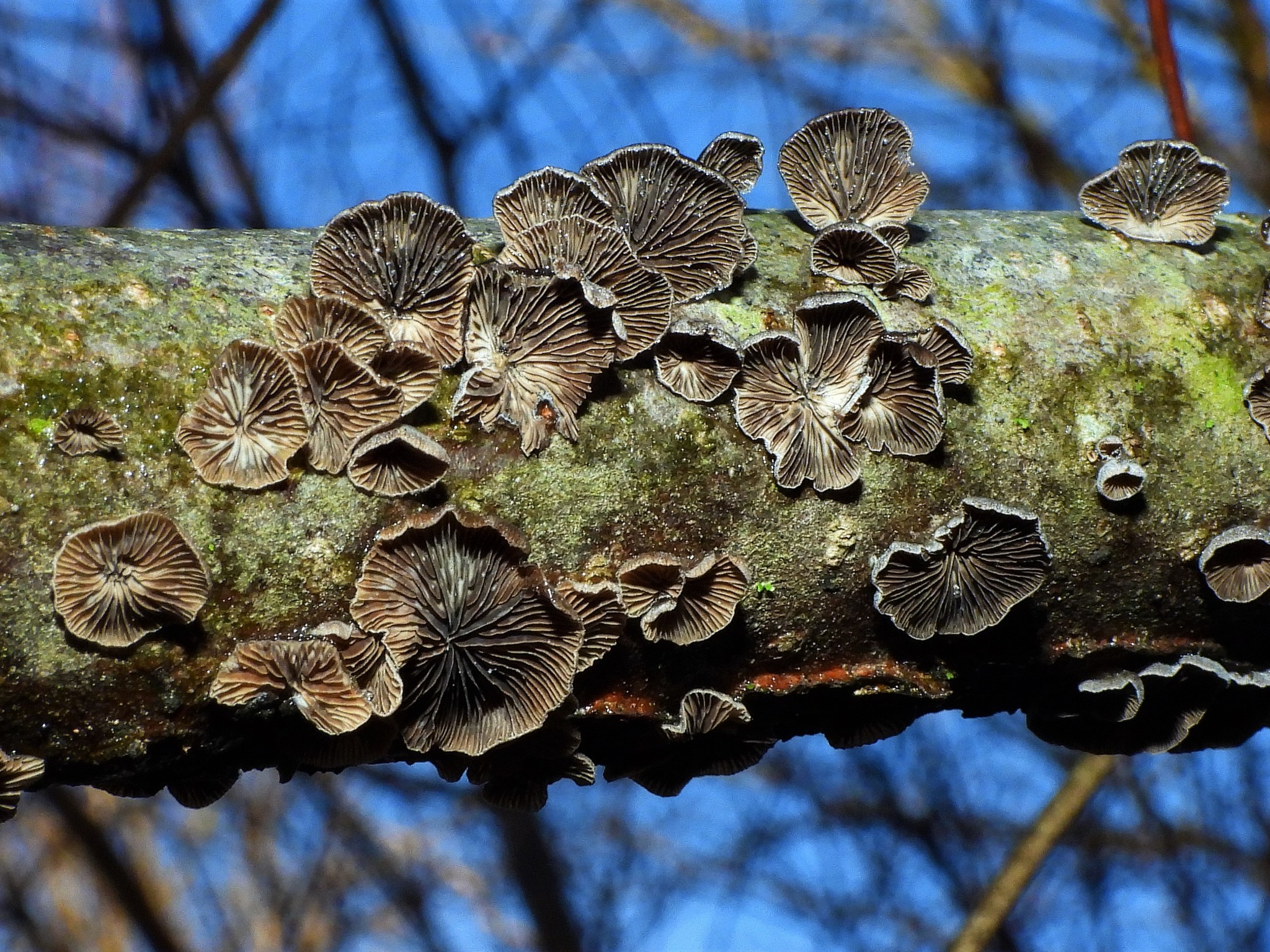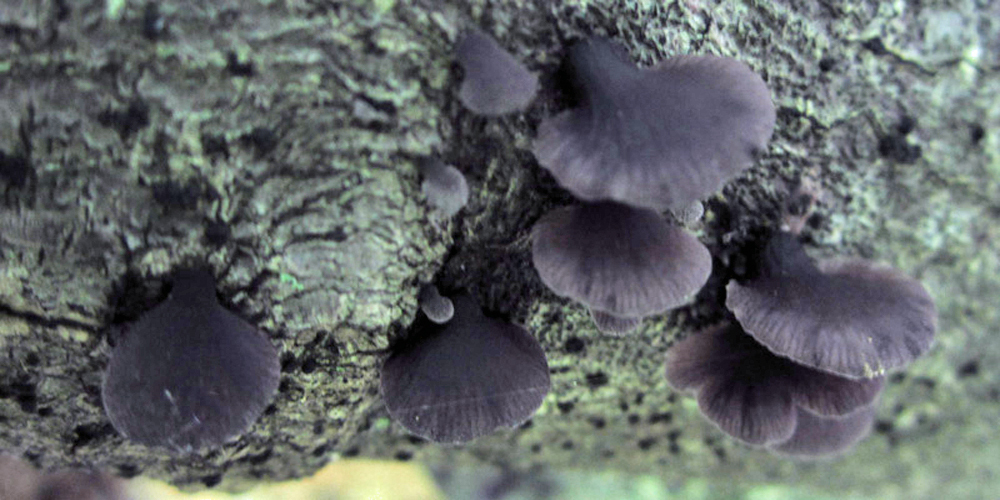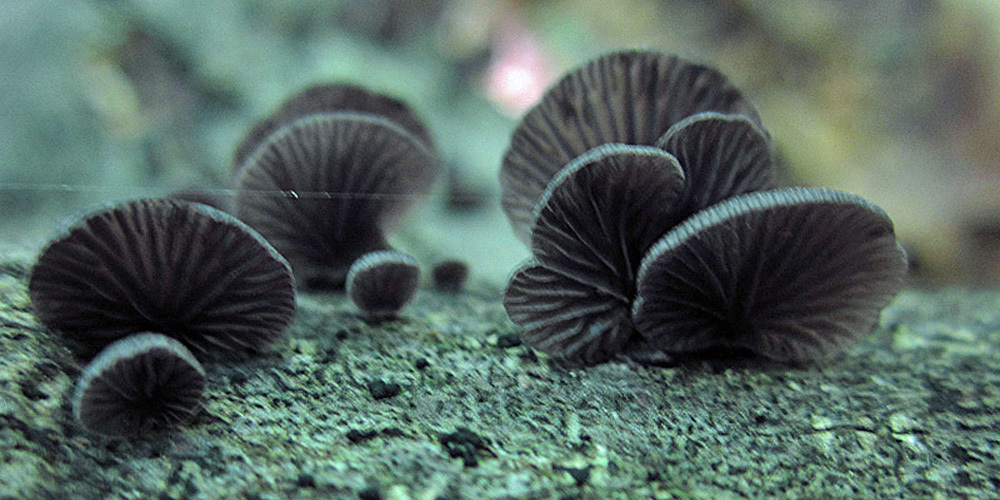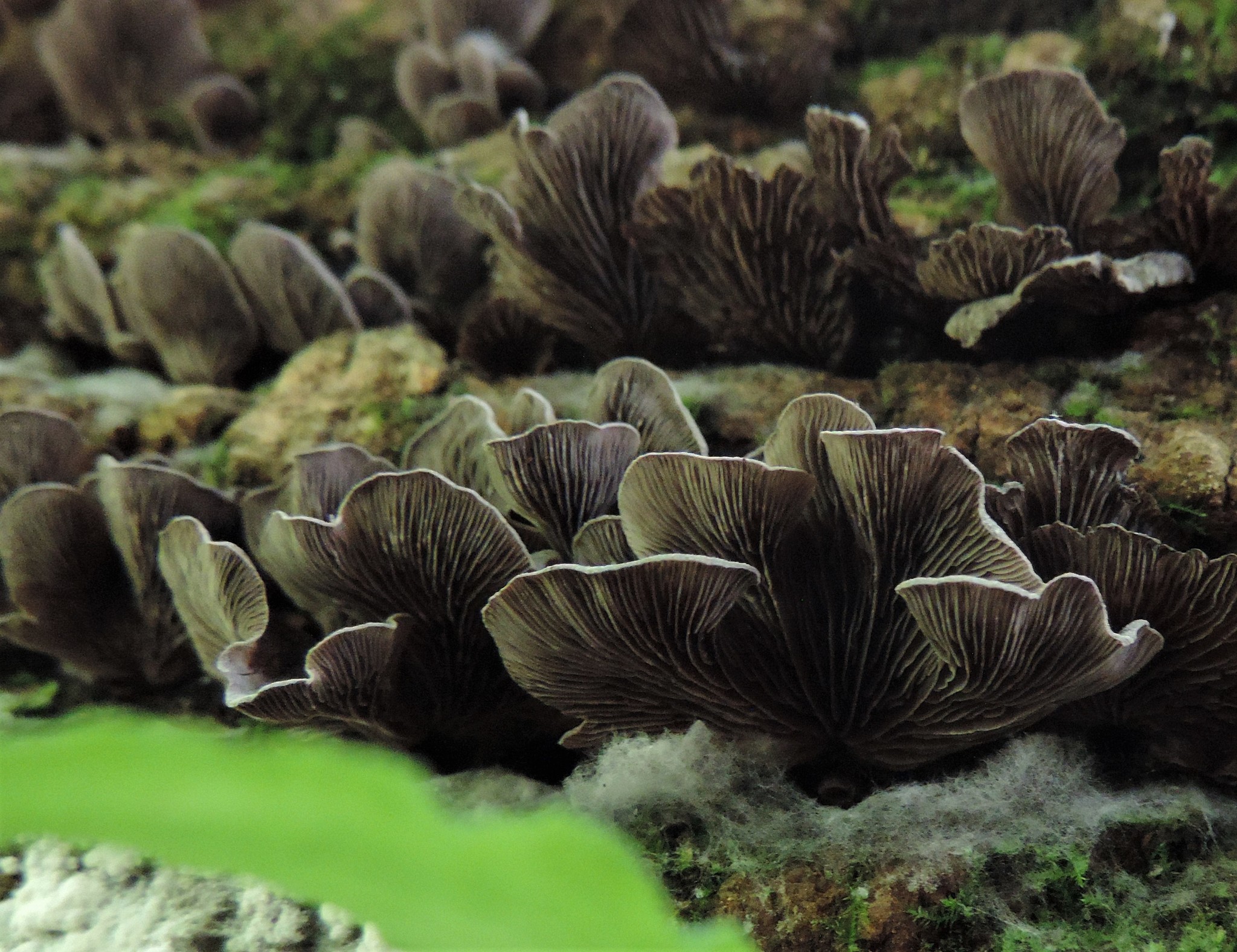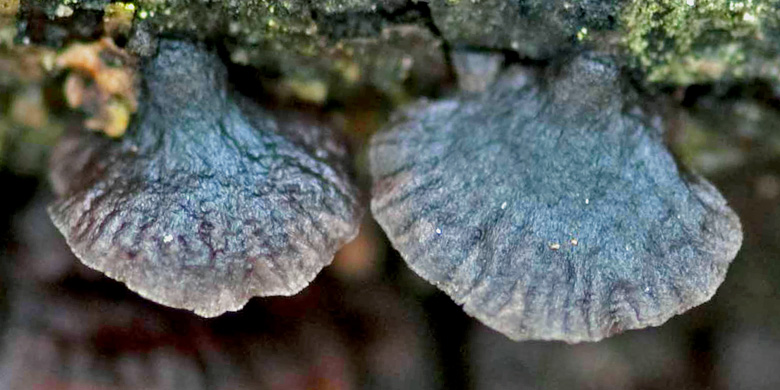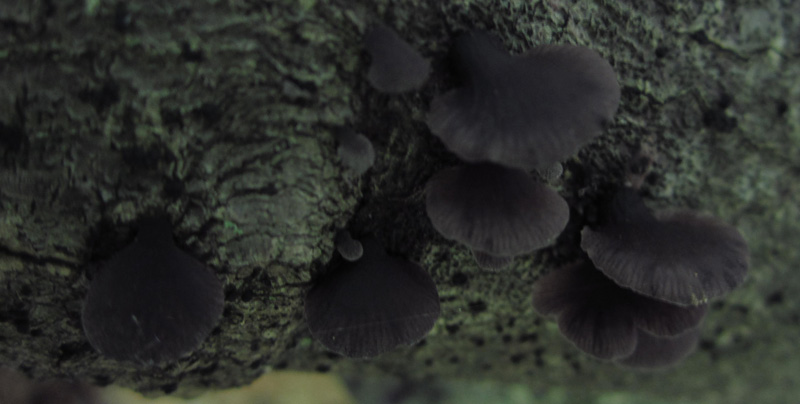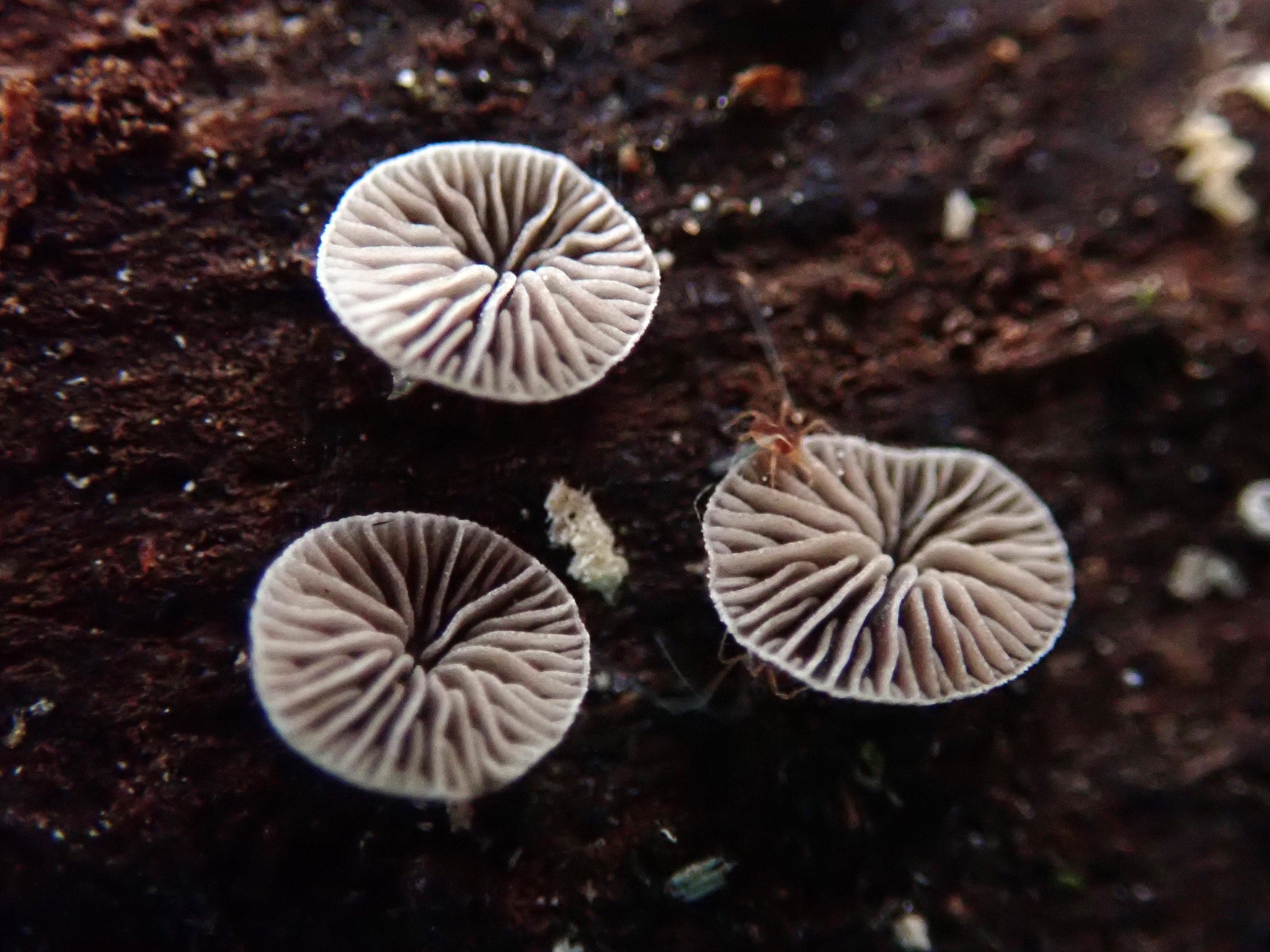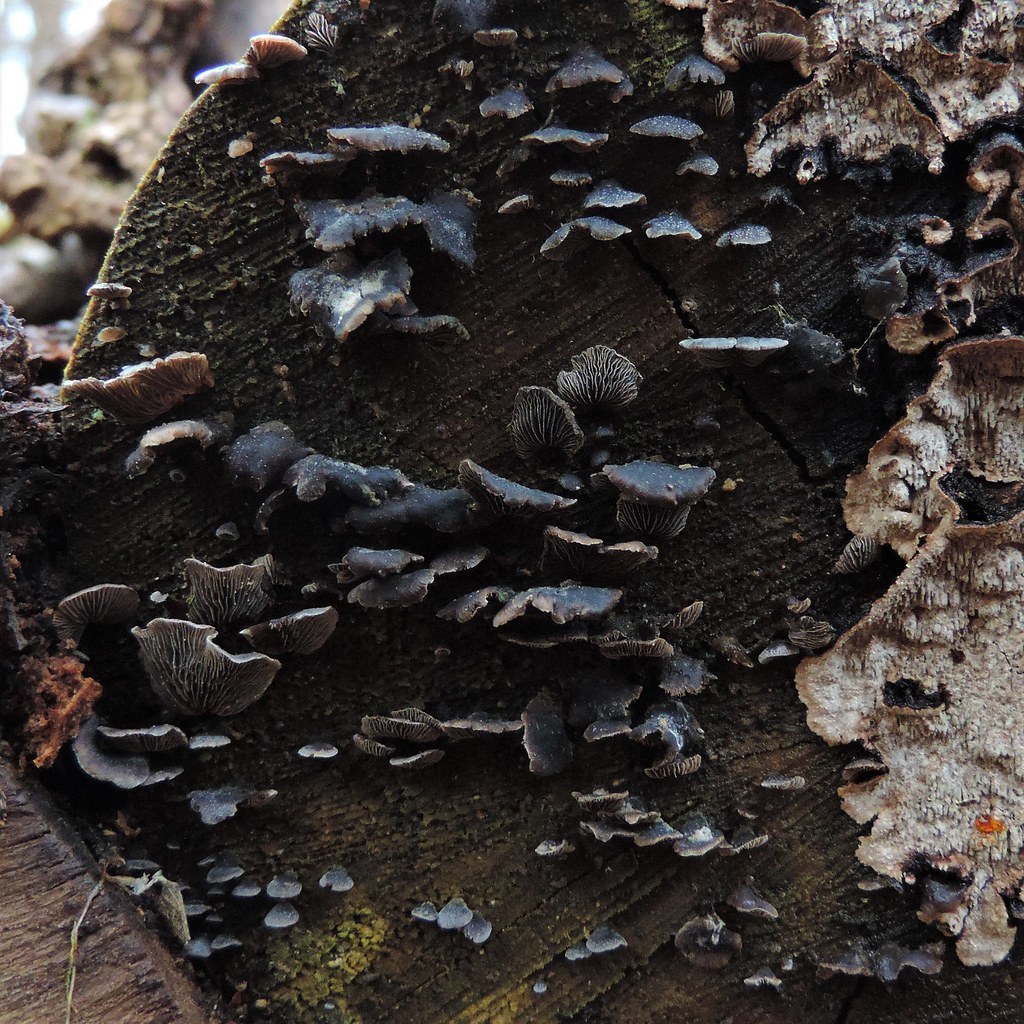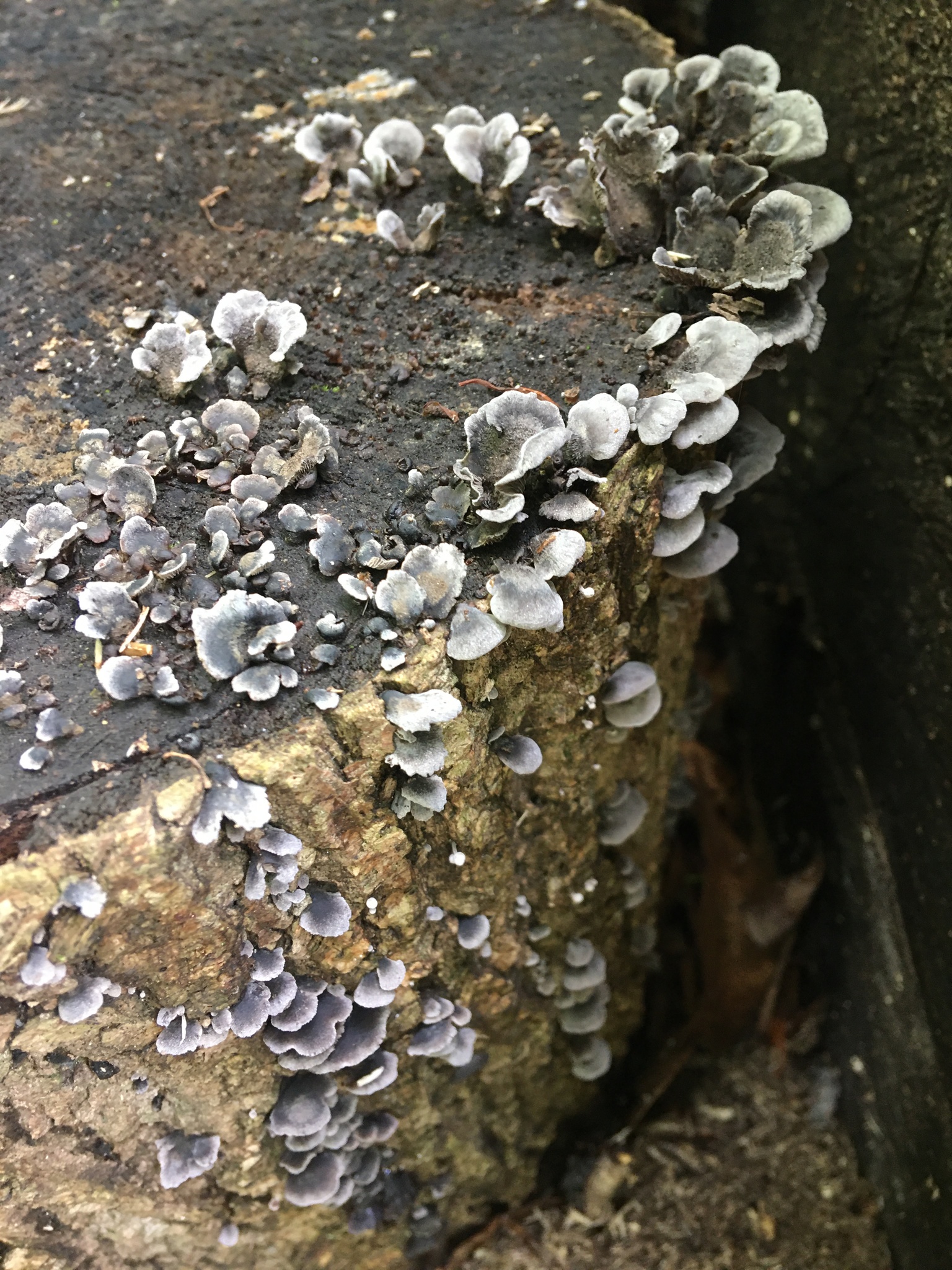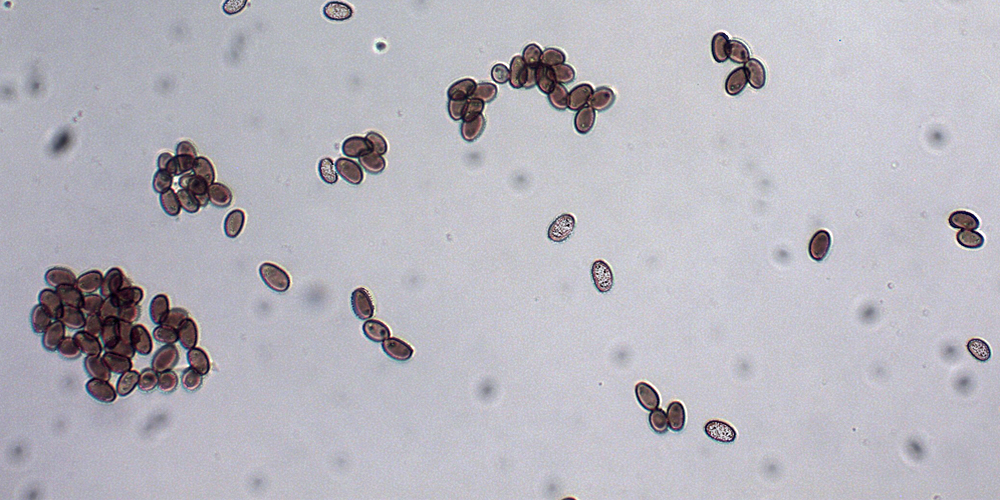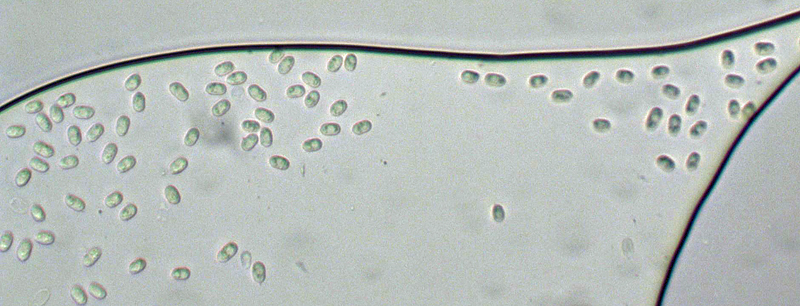

 Synonyms: Resupinatus alboniger.
Synonyms: Resupinatus alboniger.
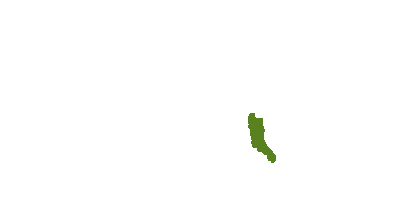
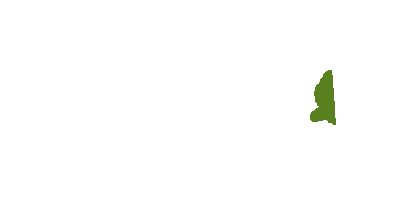


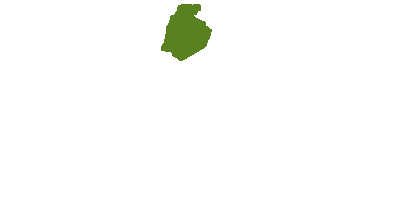
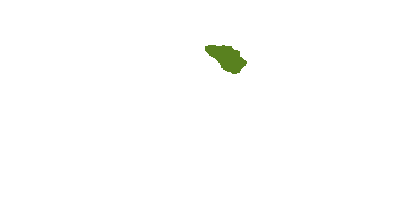


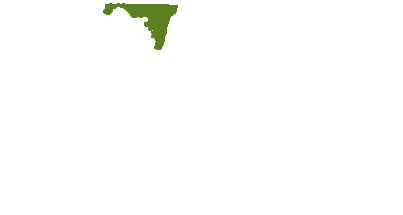
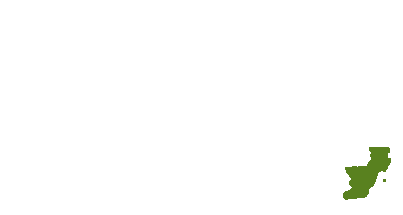
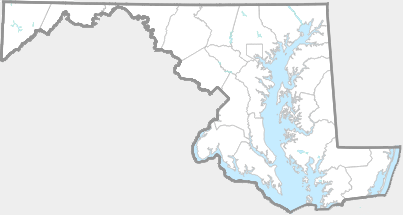
Usually found in groups; mostly on lower portions or bottoms of fallen hardwood branches or on logs, less often on conifers.
Tiny fruiting body: Kidney to shell-shaped, dry, flesh thin; varying degree of hairiness; ranging in color from light tan-brown through gray to black. Gills: Moderately distant to distant, dark with or without white edges. Stalk: None to small pseudo-stalk; laterally attached to substrate.
Note: Using macro characteristics to attempt to identify a species in this genus is challenging and often results in a "best guess." Cap color, density and location of hairs, presence or absence of a pseudo-stalk, and waviness of the margin frequently overlap among species and may vary by age and wear, as well as by species. The two species most commonly found in field guides are R. alboniger and R. applicatus. Generally the spores of the former are somewhat elongate and may be sausage-shaped, while the latter’s spores are closer to round. There are numerous species in this genus so more than spore examination may be necessary to distinguish species.
There are 42 records in the project database.
| GA | AL | WA | FR | CL | MO | HO | BA | BC | HA | CE | PG | AA | CV | CH | SM | KE | QA | CN | TA | DO | WI | SO | WO |

